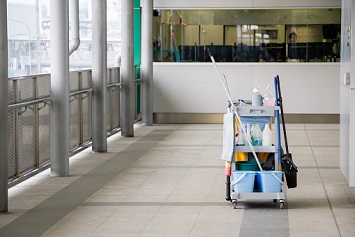With the number of COVID-19 cases beginning to level off in some areas, employers that have ceased operations or shifted to remote work may be considering when, and how, they might be able to bring people back to their facilities. While businesses are understandably eager to resume operations, the potential for missteps is high. Returning to business as usual without adequate precautions in place could erase progress in containing the virus and damage employees’ trust.
Risk Reduction Practices
As businesses reopen, social distancing and other preventive measures are more important than ever to prevent a resurgence of cases. The following strategies can help reduce risk:
- Assess the risks of COVID-19 exposure in your workplace, both for the workforce as a whole and for particular jobs or tasks.
- Continue to allow telework or deliver services remotely if possible, and postpone nonessential meetings or events.
- Increase physical space between employees at the worksite. At some workplaces, this may require redesigning workstations, staggering shifts, or refraining from bringing back a full staff right away.
- Increase physical space between employees and customers. The use of partitions, drive-through services, and curbside pick-up or delivery can accomplish this, as can limiting the number of customers allowed in the facility.
- Keep common areas such as break rooms closed or restrict the number of employees permitted in these spaces simultaneously to allow employees to maintain proper social distancing. Have employees eat at desks or individual workstations rather than in groups if possible.
- Use signage and floor markings to manage the flow of traffic through the facility and provide visual cues to encourage people to maintain 6 feet of space from others.
- Ensure an adequate supply of soap, alcohol-based hand sanitizer, and other cleaning and disinfection materials. Encourage employees to take frequent handwashing breaks and reinforce this message with signage or posters detailing proper washing procedures.
- Follow current guidance regarding the use of masks and face coverings, both for employees and customers or clients (if applicable).
- Consult OSHA’s industry-specific guidance if applicable:
Reopening After a Case or Outbreak
According to guidance from the Centers for Disease Control and Prevention (CDC), a facility that has shut down as a result of a COVID-19 case or outbreak should wait at least 24 hours after the shutdown before bringing in staff to clean and disinfect in order to minimize potential for exposure to respiratory droplets. Cleaning staff should clean and disinfect all areas, including offices, bathrooms, and common areas, with particular attention given to frequently touched surfaces. The CDC says that operations can resume when cleaning and disinfection are completed, although state or local governments may have more stringent requirements, and businesses everywhere are advised to maintain social distancing practices and implement infection control practices appropriate for the industry and operations.
The CDC recommends the following cleaning and disinfection procedures:
- Clean dirty surfaces with soap and water prior to disinfection.
- Next, disinfect surfaces using products that meet EPA’s criteria for use against COVID-19 and are appropriate for the surface.
- Follow the manufacturer’s instructions for all cleaning and disinfection products for concentration, application method, contact time, and required personal protective equipment (PPE).
Training and Communication
Clear communication is critical to a smooth reopening that minimizes risk and maintains employees’ trust. Employers should inform workers of the plan for reopening, including who will be asked to return to the worksite and when; the health and safety procedures in place to minimize risk and employees’ role in them; and any modifications to policies for remote work, sick leave, scheduling flexibility, or other pertinent topics.
In addition, employers should establish a convenient procedure for employees to report any safety or health concerns and encourage employees to do so. Reports should be taken seriously and investigated promptly, and any necessary corrective actions should be implemented as soon as possible. It should go without saying that employers may not retaliate against employees who raise safety and health concerns in the workplace, whether related to COVID-19 or another issue.
OSHA recommends that employers train all workers with reasonably anticipated occupational exposure to COVID-19 about the sources of exposure to the virus, the hazards associated with that exposure, and the workplace protocols in place to prevent and reduce the likelihood of exposure. Training should include information about isolating employees with suspected or confirmed COVID-19 cases and how to report a possible case or exposure. Training must be offered during scheduled work times and at no cost to employees and must be provided in a language and vocabulary that employees can understand.

